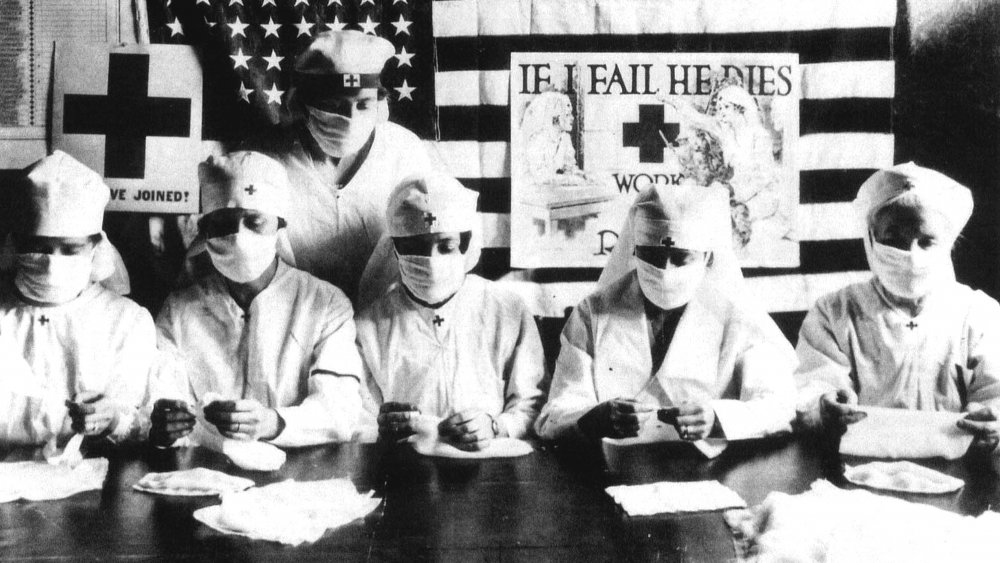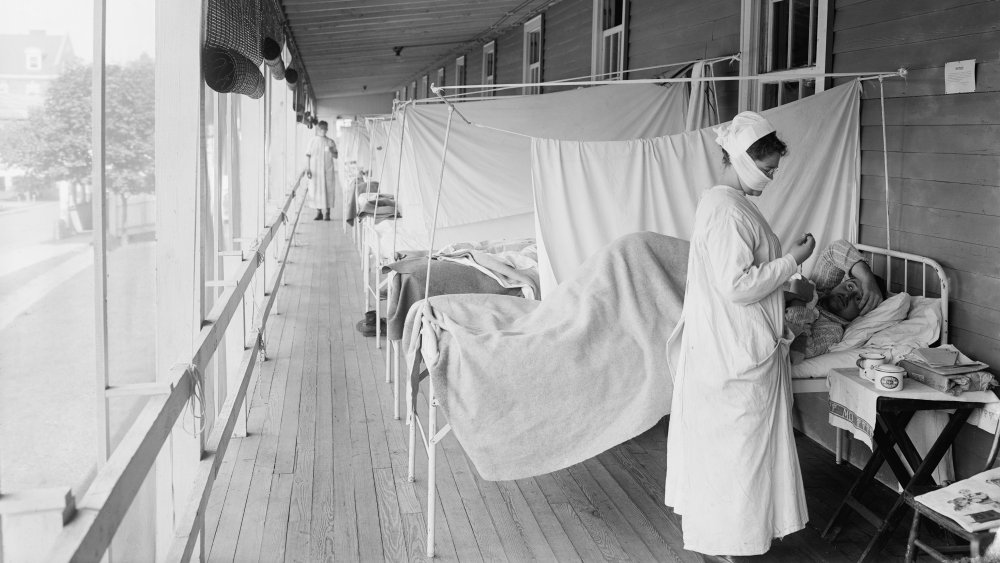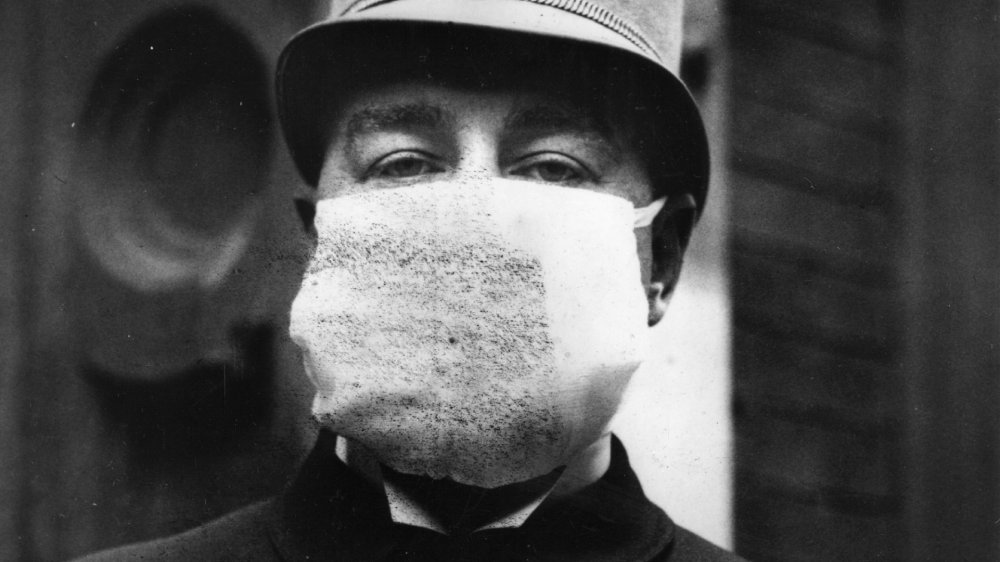The Truth About The Anti-Mask League Formed During The 1918 Pandemic
Masks are fun. Look at Halloween. Look at Rio's Carnival. Mardi Gras. Superheroes. Even heroes who aren't super. Put on a mask and be better than you are. Or worse, depending on your mood. The first half of 2020 has seen a rush on masks for people going out in public, an attempt to flatten the infection curve for the coronavirus. Keep from breathing other people's viruses, don't distribute your own. In other words, masks let you keep to yourself. Also, stay alive while not killing anyone else, as Business Insider points out.
There are those today who will take the position (without, let it be known, a mask) that mandated masking is an infringement on their personal freedom. In a now-viral clip, a customer tells a Costco employee that he isn't wearing a mask "'cause I woke up in a free country." (The customer was told politely to leave.) Others believe that it's simple courtesy, as well as crucial for the public health, a small personal sacrifice for the greater, common good.
Millions died globally during the 1918 pandemic
Funny how a little piece of cloth can become the focus of a political debate, and a political divide. Surely it's a unique sign of our troubled times. But not so, youngster. This is not our nation's first pandemic rodeo, and it's not the first time people got snippy about wearing masks in public to help control a public health menace.
The 1918 "Spanish Flu" pandemic was devastating to the human population. History says that 500 million people were infected — about one-third of the planet's population — and somewhere between 20-50 million died, including about 675,000 Americans. No treatments were available, driving public health officials to stem the spread with other measures, like asking businesses in New York City to stagger their operating hours so that the subways would be less crowded. It also included masks. As today, most people saw the wisdom and sanity of the request, greeting the request with "patriotic fervor," says The San Francisco Chronicle. They buckled down and wore a cloth face covering of some sort when going out in public. Masks were mandated in October 1918 by San Francisco's mayor and health officer, according to Mental Floss, and people largely complied.
Even in 1918, masks were considered a helpful tool in fighting the pandemic
By November the mandate was lifted and people breathed a little more easily (literally and figuratively), says PolitiFact. But January 1919 saw a spike in cases and reinstatement of the mask requirement. And it being America, and specifically San Francisco, the Anti-Mask League was born.
It was started by Emma Harrington, an attorney and, coincidentally, the first woman voter in San Francisco's history, back in 1911. The first meeting drew a couple of thousand people who passed resolutions stating that mandated masks were "contrary to the desires of the majority of the people." The mask rule was rescinded in February, shortly after the League devolved into chaos, including the ousting of Harrington.
Perhaps not coincidentally, San Francisco had one of the highest death rates in that pandemic: 673 per 100,000. "It is impossible to say for certainty that the advent of the Anti-Mask League played a role in that outcome," said J. Alexander Navarro of the University of Michigan Center for the History of Medicine. "Undoubtedly, having over 2,000 people gather would have helped continue to spread influenza."


